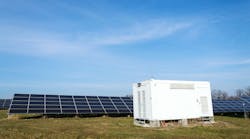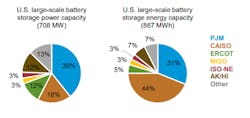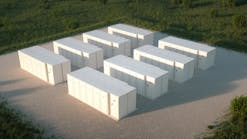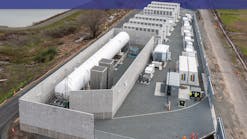Electricity has historically been a “generate as you go” business. This required that we keep extra capacity (up to 40%) to call upon when a plant went down, when temperatures spiked, or a when we lost lines and had to deliver power from other sources. When I joined the industry, our major sources of energy came from baseload fossil and hydro and nuclear. But that is changing.
The editors at T&D World took a deep dive in storage in August of 2009 when we produced our first energy storage supplement. In this supplement we shared that FERC had recently approved energy storage tariffs for the Midwest ISO and the New York ISO. In that supplement I wrote a column stating everything must change. And change it has. The desire from consumers to reduce our carbon footprint, combined with the declining costs of wind, solar and storage, are moving us to a greener, more distributed future.
In December 2018, Xcel Energy announced a clean energy initiative that will deliver 100% carbon-free electricity to customers by 2050. The company also announced plans to reduce carbon emissions 80% by 2030, from 2005 levels in the eight states it serves.
This is big news. And it is being driven by more than just prices. CEO Ben Folke CEO of Xcel Energy put it this way: “We’re accelerating our carbon reduction goals because we’re encouraged by advances in technology, motivated by customers who are asking for it, and committed to working with partners to make it happen.”
The federal government is supporting storage as well. On Feb. 15, 2018, FERC “voted to remove barriers to the participation of electric storage resources in the capacity, energy and ancillary services markets operated by Regional Transmission Organizations and Independent System Operators.” This order has enhanced competition while promoting greater efficiency in the nation’s electric wholesale markets. FERC ruled to put storage on equal footing with generation and demand response to support the resilience of the bulk power system.
Storage and Renewables
Xcel’s news to go all renewable by 2050 wasn’t a total shock. In August of 2018, the Colorado Public Utilities Commission voted to allow for the early closure of coal-fired units 1 and 2 at Xcel’s Comanche Generating Station in Pueblo County with a rated output of 660 MW. Under Xcel’s Colorado Clean Energy Plan (CEP), the Comanche coal units will be replaced with 275 MW of battery storage, 707 MW of solar PV and 1,131 MW of wind.
In the city of Chattanooga, the Electric Power Board is partnering with the Oak Ridge National Laboratory and the University of Tennessee-Knoxville to build a solar-battery microgrid at its municipal airport. A two MW solar array has already been installed. And this array will be tied to two 250 kW batteries to extend the time that solar generated power is available. The present system can provide up to 85% of the airport’s energy needs.
Storage and Gas
In July 2017, a unit of AES Corp. (AES) broke ground on the Alamitos Energy Center (AEC), which combines a 640-MW natural gas power plant and the 100-MW 400 MWh battery energy storage system that will serve the Southern California Edison and the Western Los Angeles areas. Siemens and AES in the summer of 2017 agreed to create the Fluence Energy storage joint venture which is building out the storage facilities.
Looking at the Bigger Picture
According to the U.S. Energy Information Administration, nearly 40% of existing large-scale battery storage power capacity (and 31% of energy capacity) lies in the Pennsylvania-New Jersey-Maryland Interconnection (PJM), which runs energy and capacity markets and the transmission grid in 13 eastern states and the District of Columbia. Installations in California Independent System Operator (CAISO) territory accounted for 18% of existing U.S. large-scale battery storage power capacity in 2017, but they accounted for 44% of existing energy capacity.
We need to further upgrade our grid to accommodate increasing wind, solar and storage coming onto the market. I can’t personally see how we could have sufficient long-term storage by 2050 to go 100% renewable. But that doesn’t mean it won’t happen. To Ben Folke and his team at Xcel: “More green power to you.”



